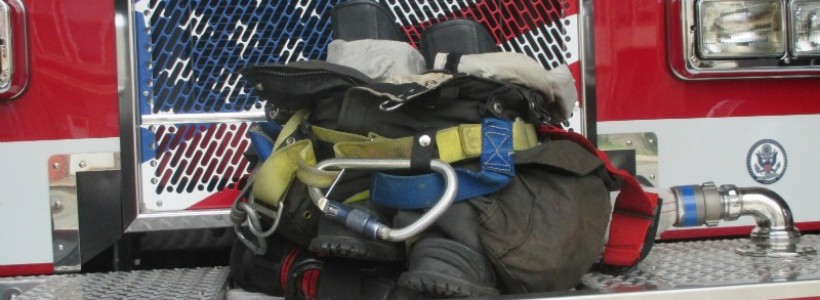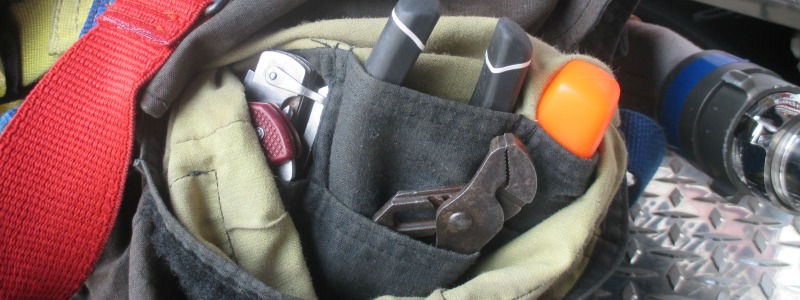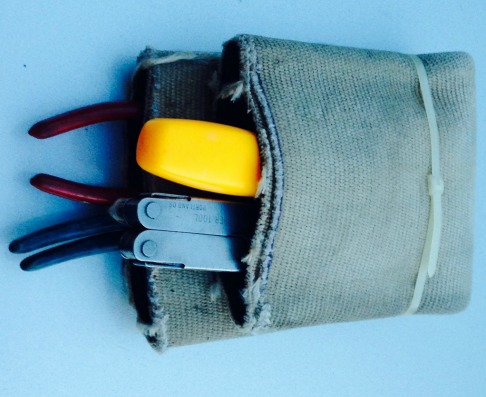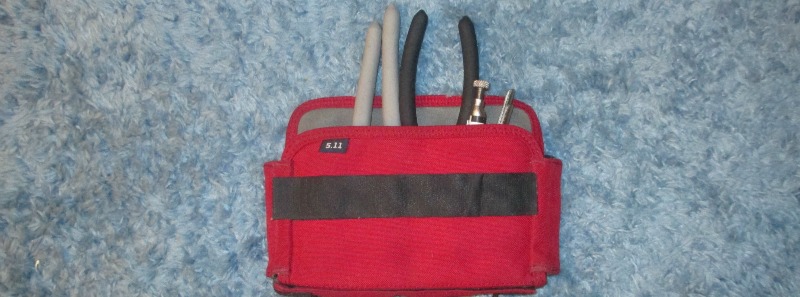How to Organize Tools In Your Turnout Gear Pocket
How to organize your pocket toolbox for best performance when a tool is required and how to protect your pocket from wearing out is what I am about to share.
Recently turnout gear manufacturers have provided options to fire departments when specing out gear to better organize and protect pockets from excessive wear from the weight of tools in pockets.
Manufacturers have taken a proactive approach to preventing holes and rips in pockets of bunker pants and turnout coats. The manufacturers have given the fire service the option of putting in extra rip resistant material as pocket liners to provide a thicker bottom and sides. This liner helps to reduce the rips and tears from our tools, keeping them from falling out through the holes.
Sewn-in Tool Pockets
Some manufactures have raised the bar in pocket protection and organization. They have created sewn-in tool pockets for the bunker pants pockets. These pockets allow for tool organization in the pocket instead of having all the tools piled on top of each other in the bottom of the pocket. The tools easily slide in and out of the pockets for rapid selection and replacement of the tool back into the pocket when the task is complete. This combined with lining the pocket with extra fabric for rip and abrasion resistance keeps our tools safe and inside our pockets, ready for deployment.
Re-purposed Hose Organizer
Some firefighters have become their own innovators in tool organization and reducing the wear and tear of their pockets. You can create simple tool organizer just by taking a small section of out of service hose that going to be thrown out and cutting a piece that is approximately 10 inches long. Take the 10-inch piece of hose and fold it so that 4-inch and 6-inch sections are created. Use a zip tie to hold the fold securely yet loose enough to be able to put your tools into the two large slots that are created.
Commercial Pocket Organizers
For a little bit of money there are tool pocket organizers that are being sold by fire service equipment vendors to firefighters that will fit into the pockets. These organizers perform both jobs (organization and protection of the pocket) as well. Tools can easily be located in the pocket with a gloved hand. That is an important feature when operating at a scene.
Having the proper tools and having them ready at a moment’s notice are key features to making us more efficient and effective firefighters. Proper organization of your pocket toolbox will make you a better prepared firefighter for whatever may happen out there.
How do you organize your pockets? Tell me in the comment section.
Stay safe!
Photos courtesy of John Hayowyk, Jr.









Great article Lt.
I keep the same tools in the same pocket at all times for muscle memory. This will help me organize them better.Thanks. Keep up the great work!
John,
You touch on a great point. Develop muscle memory for where your tools are but where your radio mic and bail out hook are. Knowing where they are without having to look is key.
Thanks for the feedback.